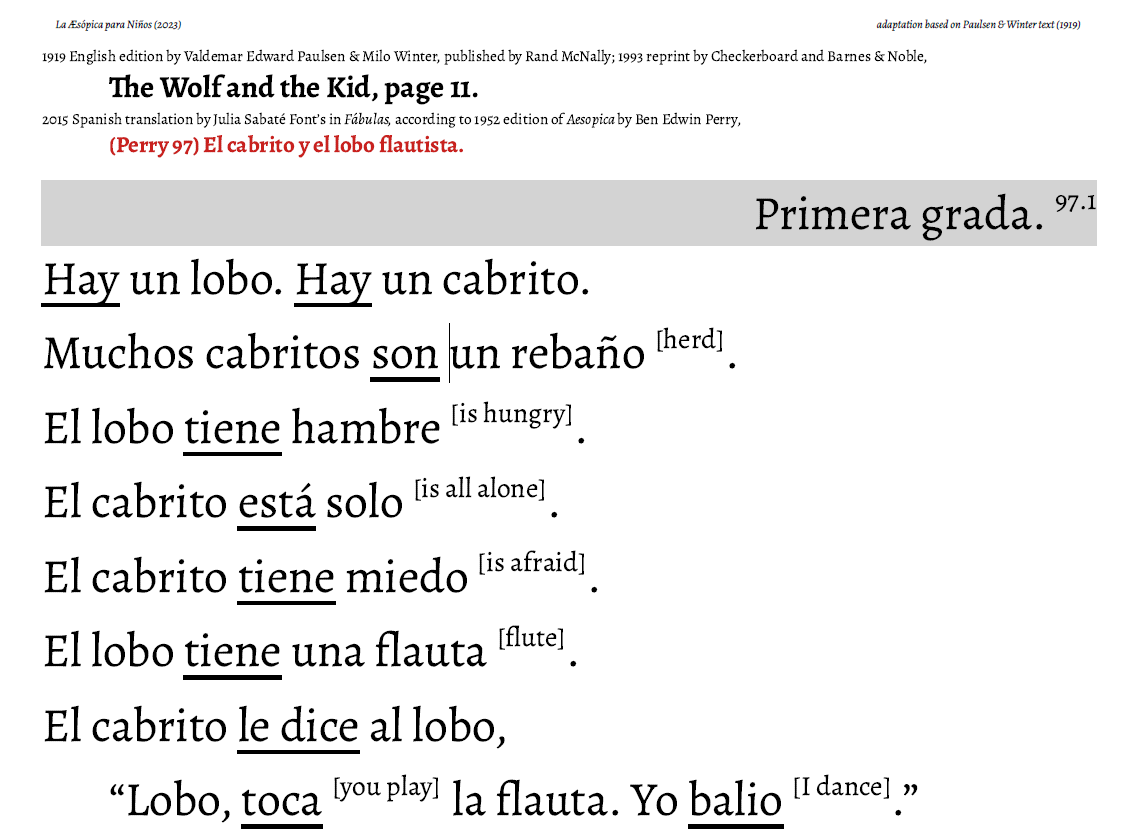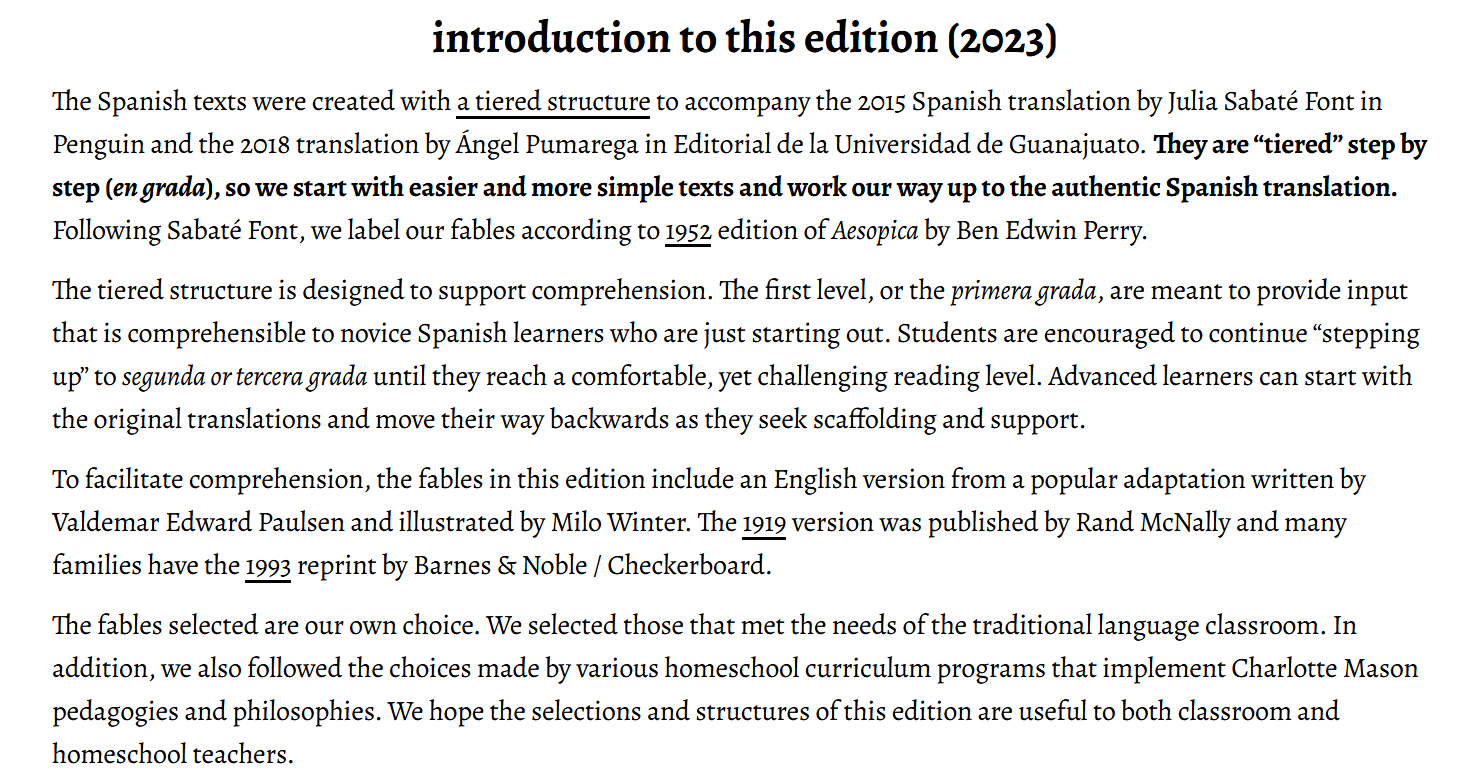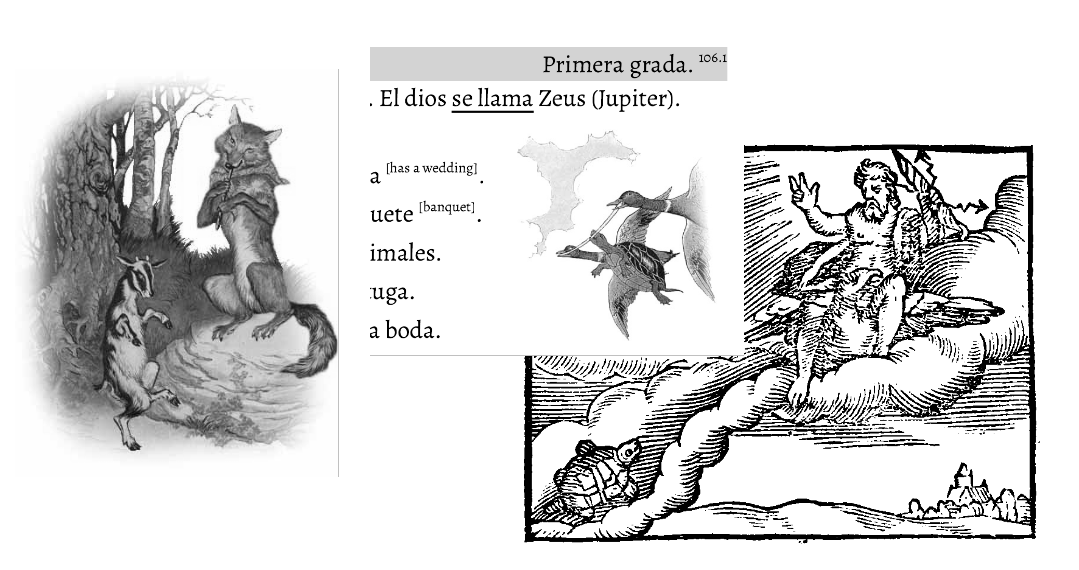I spent quite a long time this school year building some content infrastructure. I needed shorter texts at different levels, and so settled on adapting Aesop's Fables into comprehensible, bite-sized texts. There is quite an abundance of Spanish translations and adaptations of Aesop's Fables. Together with a small team of helpers, we developed 100 pages of content for students.
We hope these resources are helpful to all educators, those in the traditional classroom and those who homeschool.
Scroll to the bottom and find our first two fables ready for printing!

an example
The effort is to make these accessible to the earliest Spanish learners, with supports of course. We're using very simple vocabulary and define many unknown words right in the text itself. This image shows what the simplest versions look like. In this image alone, we repeat hay and tiene multiple times for repetition. We define new words like rebaño and miedo and even the cognate, flauta. Our hope is that a beginner can pick this up and explore very early in the learning process.

our introduction
Here is an image and the text of the introduction to our edition:

introduction to this edition (2023)
The Spanish texts were created with a tiered structure to accompany the 2015 Spanish translation by Julia Sabaté Font in Penguin and the 2018 translation by Ángel Pumarega in Editorial de la Universidad de Guanajuato. They are “tiered” step by step (en grada), so we start with easier and more simple texts and work our way up to the authentic Spanish translation. Following Sabaté Font, we label our fables according to 1952 edition of Aesopica by Ben Edwin Perry.
The tiered structure is designed to support comprehension. The first level, or the primera grada, are meant to provide input that is comprehensible to novice Spanish learners who are just starting out. Students are encouraged to continue “stepping up” to segunda or tercera grada until they reach a comfortable, yet challenging reading level. Advanced learners can start with the original translations and move their way backwards as they seek scaffolding and support.
To facilitate comprehension, the fables in this edition include an English version from a popular adaptation written by Valdemar Edward Paulsen and illustrated by Milo Winter. The 1919 version was published by Rand McNally and many families have the 1993 reprint by Barnes & Noble / Checkerboard.
The fables selected are our own choice. We selected those that met the needs of the traditional language classroom. In addition, we also followed the choices made by various homeschool curriculum programs that implement Charlotte Mason pedagogies and philosophies. We hope the selections and structures of this edition are useful to both classroom and homeschool teachers.
free files
Here are two pdf files with all three tiers and an English translation. Check out the cool images!
- link to pdf: 11.wolf.kid-lyll.aesopica.pdf
- El cabrito y el lobo flautista
- link to pdf: 12.tortoise.ducks-lyll.aesopica.pdf
- Zeus y la tortuga

